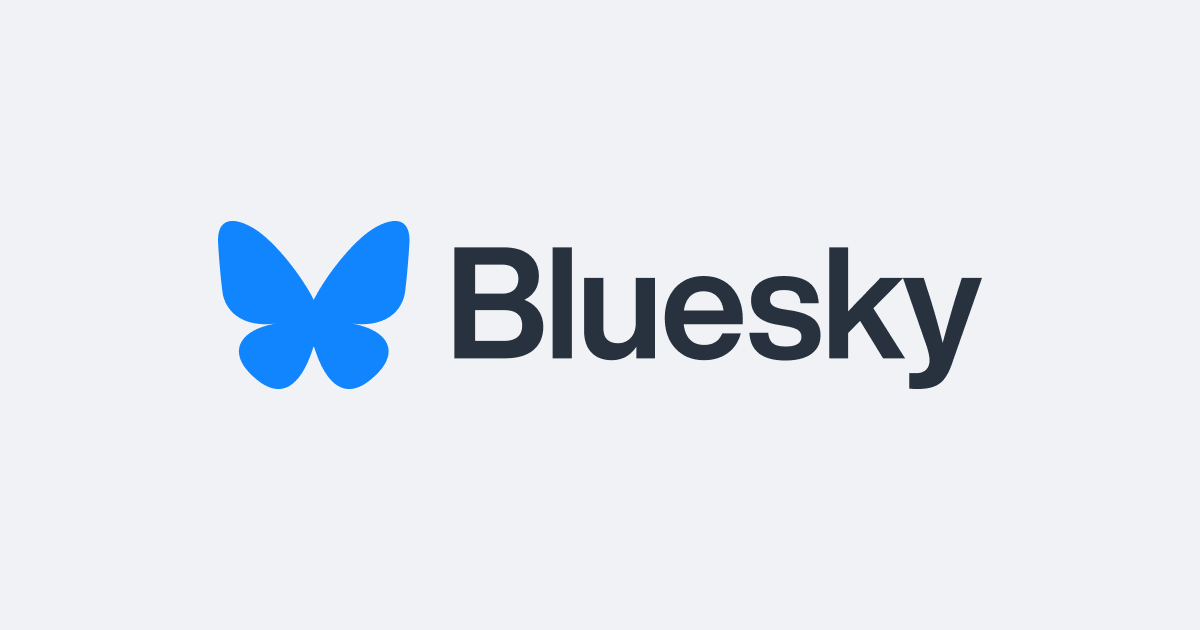Blog

21 January 2025
The start of a new year brings an air of possibility—a chance to recalibrate, set goals, and seize fresh opportunities. For practises, it’s critical to ensure that marketing strategies are driven by insights rather than guesswork. Understanding what your data is telling you can unlock untapped potential, refine your campaigns, and, ultimately, maximize your revenue. Why Data Matters More Than Ever The digital age has given businesses access to a wealth of data. From website analytics to social media metrics, email campaign results, and customer feedback, data offers a clear view of what’s working and what isn’t. Without leveraging these insights, businesses risk wasting resources on ineffective strategies while leaving revenue on the table. Data-driven marketing enables you to: Identify High-Performing Campaigns : Understand which campaigns yielded the highest ROI and why. Pinpoint Customer Preferences : Discover what resonates with your audience based on engagement patterns. Optimise Budget Allocation : Direct spending to the channels and strategies that deliver the best results. Reviewing the Past Year: Key Metrics to Analyse Before planning for the year ahead, it’s essential to conduct a thorough review of your past performance. Focus on these critical areas: Website Analytics : What were your top-performing pages? Where did most of your traffic come from (organic, paid, social, or referral)? What is your bounce rate, and how can you improve it? Social Media Insights : Which posts garnered the most engagement (likes, shares, comments)? Did you gain followers consistently or experience stagnant periods? What type of content drove the most clicks to your website? Email Campaign Performance : What was your open rate, and how does it compare to industry standards? Which emails had the highest click-through rates? Are your email lists growing, and are they segmented effectively? Sales and Revenue Data : Which products or services were top sellers? What patterns can you identify in customer purchasing behaviour? Are there cross-selling or upselling opportunities you can explore? Customer Feedback : What themes emerge from reviews, surveys, or support queries? Are there common pain points you can address? Transforming Insights into Action Once you’ve gathered and analysed your data, the next step is to translate these insights into actionable strategies. Here’s how: Refine Your Target Audience : Use demographic, geographic, and behavioural data to create or update customer personas. Tailor your messaging to address their needs and preferences. Personalise Your Campaigns : Leverage automation tools to deliver personalized experiences. For instance, segment your email lists by customer behaviour to send targeted offers. Focus on High-Impact Channels : Prioritize the platforms and strategies that drive the most engagement and conversions. For example, if Instagram reels significantly outperform static posts, allocate more resources to video content. Test and Experiment : Use A/B testing to fine-tune your campaigns. Experiment with different headlines, visuals, or call-to-actions to identify what resonates best. Set SMART Goals : Establish specific, measurable, achievable, relevant, and time-bound objectives. For instance, aim to increase email click-through rates by 10% within the first quarter. Staying Agile and Proactive Marketing trends and consumer behaviours are constantly evolving. Regularly revisiting your data ensures you remain agile and responsive. Consider setting up monthly or quarterly performance reviews to track progress and make adjustments as needed. Additionally, stay informed about industry trends and technological advancements. Tools like AI-powered analytics or predictive modelling can enhance your ability to forecast trends and seize opportunities. The Bottom Line Starting the year fresh with a clear understanding of your marketing data empowers your business to make informed decisions, capitalize on opportunities, and maximise revenue. By reviewing past performance, identifying patterns, and implementing data-driven strategies, you can position your business for a successful and profitable year ahead. Don’t let your data sit idle. Turn insights into action, and watch your marketing efforts transform from guesswork into a finely tuned revenue-driving machine.

21 January 2025
Social media continues to evolve, and New Zealand businesses must stay ahead of the curve to maximize their marketing impact. In 2025, the top social platforms remain vital tools for reaching diverse audiences and achieving business goals. 1. Facebook Despite being a veteran in the social media space, Facebook maintains its dominance due to its vast audience and diverse features. With nearly three-quarters of New Zealanders active on the platform, it remains a crucial tool for businesses to reach various demographics. In 2025, the platform’s advancements in AI-driven advertising, hyper-targeted campaigns, and community-focused groups continue to make it indispensable for both small businesses and large enterprises. 2. Instagram Instagram continues to thrive, particularly among younger audiences. The platform's focus on visual content, combined with new immersive shopping experiences and short-form video via Reels, has kept it at the forefront of social media trends. Businesses in New Zealand leverage Instagram for branding, influencer partnerships, and direct-to-consumer sales, thanks to its streamlined e-commerce capabilities. 3. LinkedIn For businesses in New Zealand, LinkedIn has cemented itself as the go-to platform for professional networking and B2B marketing. With its strong focus on fostering professional connections, it’s an essential tool for companies looking to generate leads, recruit talent, or establish thought leadership. In 2025, LinkedIn’s robust analytics, interactive features like LinkedIn Live, and enhanced content discovery through newsletters and articles make it indispensable for businesses aiming to reach decision-makers and industry professionals. 4. TikTok TikTok’s explosive growth shows no signs of slowing. Its highly engaging, algorithm-driven short-form videos have captured a wide range of age groups. For Kiwi businesses, TikTok offers unique opportunities to create viral content, connect with Gen Z and Millennials, and capitalize on trends quickly. Features like live shopping and partnerships with creators make TikTok a standout for businesses looking to stay relevant. Emerging Platforms to Watch As established platforms dominate, new social media networks are carving out their niches. Here are a few to watch: BeReal: Continuing its rise, BeReal offers an authentic, no-frills alternative to traditional platforms. While less marketing-centric, it’s ideal for brands aiming to showcase unfiltered behind-the-scenes content. Lemon8: A hybrid of Instagram and Pinterest, Lemon8 is gaining traction with users seeking aesthetic, lifestyle-driven content. This platform is particularly appealing to niche businesses in fashion, travel, and wellness. Bluesky: Founded by Twitter’s Jack Dorsey, Bluesky is a decentralized social platform focused on user control and privacy. It’s gaining interest from tech-savvy audiences and offers early adoption opportunities for forward-thinking brands. To succeed in 2025, New Zealand businesses should maintain a strong presence on established platforms like Facebook, Instagram, LinkedIn, and TikTok, while experimenting with emerging ones to engage audiences and stand out in an ever-changing digital landscape.

16 December 2024
‘Tis the season to … do some network housekeeping. What would you do if the unexpected happens while you’re on the beach? Check your system before closedown. What’s your festive season backup plan? A blackout, a stolen laptop, or the dancing turkey video infecting the system with a virus could dampen the Christmas cheer. Even if you don’t have a contract with an IT provider, it may be worthwhile to have them audit your system and review your IT plan. Establish clear protocols with your team so they don’t put the business at risk by failing to backup key files or unwittingly downloading a virus. Start the holidays with peace of mind and come back in the new year good to go. Check: Virus protection: Is it up to date to carry you through the holiday period? Backup: Does routine backup of data and files include all shared drives or just some? What about your laptops? Make sure you and team are saving to the shared drives and not leaving the latest versions of critical files in local My Documents folders. Are backups stored securely offsite or in the cloud? Are laptops and hard drives synchronised to cloud storage? Does this happen automatically on login or is it a manual process? Future proof: Plan to replace out of date equipment. Even if your computer setup isn’t absolutely up to the minute, it should be able to handle your business applications’ operating requirements. If your systems are cloud-based, make sure hardware capability and internet speeds don’t slow the team down whether downloading, uploading and just getting things done. Should this be a priority? The Sharpe Marketing team use Mark from IT Star. They are professional services experts.

12 December 2024
The battle for dominance in the social media landscape is heating up with Bluesky, a decentralised alternative to traditional platforms, entering the fray against tech giant Meta. While both platforms serve to connect users, their distinct approaches have sparked debate about the future of social networking. This article explores the benefits, disadvantages, and staying power of Bluesky and Meta in the ever-evolving digital ecosystem. Bluesky: A Decentralised Vision Bluesky, initially incubated by Twitter, aims to disrupt the status quo of social media by decentralising the network. Built on the AT Protocol (Authenticated Transfer Protocol), Bluesky provides users with greater control over their data and experience. Benefits: User Autonomy: Bluesky allows users to choose their algorithms, empowering them to curate content more effectively. This feature combats issues like misinformation and algorithmic bias. Data Ownership : Unlike centralised platforms, Bluesky doesn’t control user data. Users retain ownership, reducing concerns over data misuse and privacy breaches. Interoperability : Bluesky’s decentralised framework supports cross-platform compatibility, enabling users to interact across different networks seamlessly. Resistance to Centralised Control : Decentralisation reduces risks associated with monopolistic practices, censorship, or abrupt policy changes dictated by corporate interests. Disadvantages Limited Reach : As a newer platform, Bluesky lacks the massive user base of its competitors, potentially limiting its appeal and network effects. Complexity : Decentralisation can confuse mainstream users unfamiliar with managing algorithms, nodes, or federated networks. Content Moderation Challenges : Decentralised systems often struggle to enforce consistent content standards, which can lead to unchecked harmful content. Meta: The Established Powerhouse Meta, which owns Facebook, Instagram, and WhatsApp, represents the centralised model of social media. With billions of users worldwide, Meta dominates digital communication and advertising. Benefits Massive Reach : Meta’s platforms boast billions of users, making it an essential hub for personal connections, businesses, and advertisers. Ease of Use : Meta’s user-friendly interfaces and integrated features like Messenger and Instagram Stories keep engagement high and adoption simple. Robust Ecosystem : Meta’s suite of tools supports everything from e-commerce to community building, providing a one-stop shop for users and businesses alike. Advertising Power : Advanced targeting capabilities make Meta the go-to platform for advertisers, ensuring a steady stream of revenue and relevance. Disadvantages Privacy Concerns : Meta has faced numerous controversies over data harvesting, algorithmic manipulation, and user tracking, eroding trust among privacy-conscious users. Algorithmic Control : Critics argue that Meta’s algorithms prioritise engagement over user well-being, amplifying polarising content and misinformation. Monopolistic Practices : Meta’s dominance raises concerns about its ability to stifle competition and dictate the terms of social media use. Overcrowding and Spam : The sheer volume of users on Meta’s platforms can lead to a noisy, spam-filled experience. Who Is Here to Stay? The staying power of Bluesky and Meta depends on their ability to adapt to shifting user expectations and market dynamics. Meta’s Staying Power Meta’s massive user base and financial resources provide a significant advantage. Its ability to innovate, as seen with its pivot to the metaverse, shows resilience in the face of competition. However, ongoing legal and reputational challenges could erode trust, pushing users toward alternatives. Bluesky’s Staying Power Bluesky represents a future where decentralisation offers freedom from corporate control. Its success hinges on widespread adoption, compelling use cases, and the ability to balance autonomy with effective content moderation. If it can educate users and address scalability concerns, Bluesky could carve out a dedicated user base and challenge Meta’s dominance. Our conclusion Bluesky and Meta embody two divergent visions of social media. Meta excels in reach, convenience, and monetisation but struggles with privacy and monopolistic practices. Bluesky, while innovative and empowering, faces hurdles in adoption and moderation. The choice between these platforms reflects broader societal debates about centralisation versus decentralisation, privacy versus convenience, and corporate control versus user empowerment. While Meta’s dominance ensures its continued relevance, Bluesky’s emergence signals a growing appetite for change in how we connect online. Both may coexist, serving different niches in the vast digital landscape.

9 December 2024
You set up your website to engage with new and returning clients. How’s that going for you? What do you know about viewer experience on your site? One great thing about websites is that they track a wealth of valuable business data. Are you using that data to analyse what that means for your business? Or to keep on refining viewer experience on your business’ website? Just as it’s important to keep your website fresh with regular new and updated content, it’s also important to stay current with the kind of traffic your site receives. Tools like Google Analytics can help you find out: Where traffic flows to your site The most popular pages Time spent on each page Traffic at different times of the year Are there patterns that emerge when you sift through the data? Are viewers who progress to the online checkout the ones who spend the most time on the most pages? Or a specific page? Is there a common entry point on the site for viewers who contact you for more information? Look at system performance too. A simple issue like image-heavy pages that take too long to load might be driving would-be customers to a competitor. Are all the links working on all the pages? If you’re new to this, don’t get swamped with all the data. Target what you think is most important. If you’re not the most tech-savvy, seek expert advice for a full overview of your website’s performance and how it can be improved. It could be the difference between a new customer or another new client for your competitor.

9 December 2024
When was the last time you had a brand makeover? Are you connecting with prospective clients the way you want to? Branding is more than just a clever logo and a selection of colours. Professional branding could boost your referrals and getting new clients in the door. When it comes to the public perception of your practice, create a brand that resonates with the right audience. A logo isn’t just a picture to represent your company- it as a "communication tool". Here is Meg's personal insight into the importance of building trust through branding: Good marketing is all about repetition. It takes eight touch points to make clients more loyal, more engaging. So, if someone sees your brand – even for a couple of seconds – you want to create a feeling of connection that generates trust. Your brand gives your business a voice and a personality. Keeping your brand consistent is another way to boost your product’s perceived value. “If people create a logo with random fonts and colours, it doesn’t look professional. You need imagery that’s consistent across all your marketing. It’s my job to think about how your brand looks on all the platforms – from a long website banner to a small circular profile picture. It’s worth investing in professional branding. One client of ours saw an increase in engagement, reach, referrals over three months after we refreshed their brand. Business owners are often passionate about what they do, but they might not know what their niche is, what sets them apart, or who their target audience is. We take all of that into consideration before designing. It’s not about using your favourite colour but choosing a logo concept that works best for its function. When we’re designing, we’re thinking from the client’s point of view, not the practice owner’s,” explains Meg. “Engaging your target audience is the most important thing. Why not use us as a sounding board for ideas on your branding!

9 December 2024
Are you on a tight budget? A blog can help build trust, boost your reputation, and subtly promote your practice. Lift your firms’ visibility and your personal profile. Not a writer? Too hard? Spending time pulling together a few words to educate, inform, or inspire clients is worth it. Having a blog on your website can provide value while subtly promoting your business. Here are nine tips to get you started: Blog writing helps establish you in your area of expertise and educate people about your industry. Use blogs for announcements, celebrating business milestones, and showcasing events or staff gatherings. Choose a topic you can write easily and passionately about. Don’t worry too much about word count. 300 words is a five-minute read but don’t worry if it’s twice or three times that - as long as you break it up with subheadings and it’s bringing value to your client, let it flow. Keep it relaxed, conversational. If you write as you speak, your customers feel like they know you and are more likely to want to do business with you. Try a simple ‘how-to’ or ‘tick-list’ post or offer your perspective on trending news. Avoid technical jargon or in-house jokes. Check out your competitors to see what they’re writing about. Make sure you’re bringing fresh ideas, insight, and ideas. Direct followers to your blog on your social media platforms. Include keywords to help your Google search ranking. For example, if you’re a roofer in Wellington, make sure you include words like 'roofer Wellington' or 'best roofer in Wellington' because these are phrases people use when searching for businesses like yours.

28 November 2024
If you want to improve your social skills and have more engaging conversations, you need to learn about conversational threading. This is a technique that helps you extend the conversation with what you're already talking about. It's simple and effective, and you can use it in any social situation.

21 January 2025
The start of a new year brings an air of possibility—a chance to recalibrate, set goals, and seize fresh opportunities. For practises, it’s critical to ensure that marketing strategies are driven by insights rather than guesswork. Understanding what your data is telling you can unlock untapped potential, refine your campaigns, and, ultimately, maximize your revenue. Why Data Matters More Than Ever The digital age has given businesses access to a wealth of data. From website analytics to social media metrics, email campaign results, and customer feedback, data offers a clear view of what’s working and what isn’t. Without leveraging these insights, businesses risk wasting resources on ineffective strategies while leaving revenue on the table. Data-driven marketing enables you to: Identify High-Performing Campaigns : Understand which campaigns yielded the highest ROI and why. Pinpoint Customer Preferences : Discover what resonates with your audience based on engagement patterns. Optimise Budget Allocation : Direct spending to the channels and strategies that deliver the best results. Reviewing the Past Year: Key Metrics to Analyse Before planning for the year ahead, it’s essential to conduct a thorough review of your past performance. Focus on these critical areas: Website Analytics : What were your top-performing pages? Where did most of your traffic come from (organic, paid, social, or referral)? What is your bounce rate, and how can you improve it? Social Media Insights : Which posts garnered the most engagement (likes, shares, comments)? Did you gain followers consistently or experience stagnant periods? What type of content drove the most clicks to your website? Email Campaign Performance : What was your open rate, and how does it compare to industry standards? Which emails had the highest click-through rates? Are your email lists growing, and are they segmented effectively? Sales and Revenue Data : Which products or services were top sellers? What patterns can you identify in customer purchasing behaviour? Are there cross-selling or upselling opportunities you can explore? Customer Feedback : What themes emerge from reviews, surveys, or support queries? Are there common pain points you can address? Transforming Insights into Action Once you’ve gathered and analysed your data, the next step is to translate these insights into actionable strategies. Here’s how: Refine Your Target Audience : Use demographic, geographic, and behavioural data to create or update customer personas. Tailor your messaging to address their needs and preferences. Personalise Your Campaigns : Leverage automation tools to deliver personalized experiences. For instance, segment your email lists by customer behaviour to send targeted offers. Focus on High-Impact Channels : Prioritize the platforms and strategies that drive the most engagement and conversions. For example, if Instagram reels significantly outperform static posts, allocate more resources to video content. Test and Experiment : Use A/B testing to fine-tune your campaigns. Experiment with different headlines, visuals, or call-to-actions to identify what resonates best. Set SMART Goals : Establish specific, measurable, achievable, relevant, and time-bound objectives. For instance, aim to increase email click-through rates by 10% within the first quarter. Staying Agile and Proactive Marketing trends and consumer behaviours are constantly evolving. Regularly revisiting your data ensures you remain agile and responsive. Consider setting up monthly or quarterly performance reviews to track progress and make adjustments as needed. Additionally, stay informed about industry trends and technological advancements. Tools like AI-powered analytics or predictive modelling can enhance your ability to forecast trends and seize opportunities. The Bottom Line Starting the year fresh with a clear understanding of your marketing data empowers your business to make informed decisions, capitalize on opportunities, and maximise revenue. By reviewing past performance, identifying patterns, and implementing data-driven strategies, you can position your business for a successful and profitable year ahead. Don’t let your data sit idle. Turn insights into action, and watch your marketing efforts transform from guesswork into a finely tuned revenue-driving machine.

21 January 2025
Social media continues to evolve, and New Zealand businesses must stay ahead of the curve to maximize their marketing impact. In 2025, the top social platforms remain vital tools for reaching diverse audiences and achieving business goals. 1. Facebook Despite being a veteran in the social media space, Facebook maintains its dominance due to its vast audience and diverse features. With nearly three-quarters of New Zealanders active on the platform, it remains a crucial tool for businesses to reach various demographics. In 2025, the platform’s advancements in AI-driven advertising, hyper-targeted campaigns, and community-focused groups continue to make it indispensable for both small businesses and large enterprises. 2. Instagram Instagram continues to thrive, particularly among younger audiences. The platform's focus on visual content, combined with new immersive shopping experiences and short-form video via Reels, has kept it at the forefront of social media trends. Businesses in New Zealand leverage Instagram for branding, influencer partnerships, and direct-to-consumer sales, thanks to its streamlined e-commerce capabilities. 3. LinkedIn For businesses in New Zealand, LinkedIn has cemented itself as the go-to platform for professional networking and B2B marketing. With its strong focus on fostering professional connections, it’s an essential tool for companies looking to generate leads, recruit talent, or establish thought leadership. In 2025, LinkedIn’s robust analytics, interactive features like LinkedIn Live, and enhanced content discovery through newsletters and articles make it indispensable for businesses aiming to reach decision-makers and industry professionals. 4. TikTok TikTok’s explosive growth shows no signs of slowing. Its highly engaging, algorithm-driven short-form videos have captured a wide range of age groups. For Kiwi businesses, TikTok offers unique opportunities to create viral content, connect with Gen Z and Millennials, and capitalize on trends quickly. Features like live shopping and partnerships with creators make TikTok a standout for businesses looking to stay relevant. Emerging Platforms to Watch As established platforms dominate, new social media networks are carving out their niches. Here are a few to watch: BeReal: Continuing its rise, BeReal offers an authentic, no-frills alternative to traditional platforms. While less marketing-centric, it’s ideal for brands aiming to showcase unfiltered behind-the-scenes content. Lemon8: A hybrid of Instagram and Pinterest, Lemon8 is gaining traction with users seeking aesthetic, lifestyle-driven content. This platform is particularly appealing to niche businesses in fashion, travel, and wellness. Bluesky: Founded by Twitter’s Jack Dorsey, Bluesky is a decentralized social platform focused on user control and privacy. It’s gaining interest from tech-savvy audiences and offers early adoption opportunities for forward-thinking brands. To succeed in 2025, New Zealand businesses should maintain a strong presence on established platforms like Facebook, Instagram, LinkedIn, and TikTok, while experimenting with emerging ones to engage audiences and stand out in an ever-changing digital landscape.

16 December 2024
‘Tis the season to … do some network housekeeping. What would you do if the unexpected happens while you’re on the beach? Check your system before closedown. What’s your festive season backup plan? A blackout, a stolen laptop, or the dancing turkey video infecting the system with a virus could dampen the Christmas cheer. Even if you don’t have a contract with an IT provider, it may be worthwhile to have them audit your system and review your IT plan. Establish clear protocols with your team so they don’t put the business at risk by failing to backup key files or unwittingly downloading a virus. Start the holidays with peace of mind and come back in the new year good to go. Check: Virus protection: Is it up to date to carry you through the holiday period? Backup: Does routine backup of data and files include all shared drives or just some? What about your laptops? Make sure you and team are saving to the shared drives and not leaving the latest versions of critical files in local My Documents folders. Are backups stored securely offsite or in the cloud? Are laptops and hard drives synchronised to cloud storage? Does this happen automatically on login or is it a manual process? Future proof: Plan to replace out of date equipment. Even if your computer setup isn’t absolutely up to the minute, it should be able to handle your business applications’ operating requirements. If your systems are cloud-based, make sure hardware capability and internet speeds don’t slow the team down whether downloading, uploading and just getting things done. Should this be a priority? The Sharpe Marketing team use Mark from IT Star. They are professional services experts.

12 December 2024
The battle for dominance in the social media landscape is heating up with Bluesky, a decentralised alternative to traditional platforms, entering the fray against tech giant Meta. While both platforms serve to connect users, their distinct approaches have sparked debate about the future of social networking. This article explores the benefits, disadvantages, and staying power of Bluesky and Meta in the ever-evolving digital ecosystem. Bluesky: A Decentralised Vision Bluesky, initially incubated by Twitter, aims to disrupt the status quo of social media by decentralising the network. Built on the AT Protocol (Authenticated Transfer Protocol), Bluesky provides users with greater control over their data and experience. Benefits: User Autonomy: Bluesky allows users to choose their algorithms, empowering them to curate content more effectively. This feature combats issues like misinformation and algorithmic bias. Data Ownership : Unlike centralised platforms, Bluesky doesn’t control user data. Users retain ownership, reducing concerns over data misuse and privacy breaches. Interoperability : Bluesky’s decentralised framework supports cross-platform compatibility, enabling users to interact across different networks seamlessly. Resistance to Centralised Control : Decentralisation reduces risks associated with monopolistic practices, censorship, or abrupt policy changes dictated by corporate interests. Disadvantages Limited Reach : As a newer platform, Bluesky lacks the massive user base of its competitors, potentially limiting its appeal and network effects. Complexity : Decentralisation can confuse mainstream users unfamiliar with managing algorithms, nodes, or federated networks. Content Moderation Challenges : Decentralised systems often struggle to enforce consistent content standards, which can lead to unchecked harmful content. Meta: The Established Powerhouse Meta, which owns Facebook, Instagram, and WhatsApp, represents the centralised model of social media. With billions of users worldwide, Meta dominates digital communication and advertising. Benefits Massive Reach : Meta’s platforms boast billions of users, making it an essential hub for personal connections, businesses, and advertisers. Ease of Use : Meta’s user-friendly interfaces and integrated features like Messenger and Instagram Stories keep engagement high and adoption simple. Robust Ecosystem : Meta’s suite of tools supports everything from e-commerce to community building, providing a one-stop shop for users and businesses alike. Advertising Power : Advanced targeting capabilities make Meta the go-to platform for advertisers, ensuring a steady stream of revenue and relevance. Disadvantages Privacy Concerns : Meta has faced numerous controversies over data harvesting, algorithmic manipulation, and user tracking, eroding trust among privacy-conscious users. Algorithmic Control : Critics argue that Meta’s algorithms prioritise engagement over user well-being, amplifying polarising content and misinformation. Monopolistic Practices : Meta’s dominance raises concerns about its ability to stifle competition and dictate the terms of social media use. Overcrowding and Spam : The sheer volume of users on Meta’s platforms can lead to a noisy, spam-filled experience. Who Is Here to Stay? The staying power of Bluesky and Meta depends on their ability to adapt to shifting user expectations and market dynamics. Meta’s Staying Power Meta’s massive user base and financial resources provide a significant advantage. Its ability to innovate, as seen with its pivot to the metaverse, shows resilience in the face of competition. However, ongoing legal and reputational challenges could erode trust, pushing users toward alternatives. Bluesky’s Staying Power Bluesky represents a future where decentralisation offers freedom from corporate control. Its success hinges on widespread adoption, compelling use cases, and the ability to balance autonomy with effective content moderation. If it can educate users and address scalability concerns, Bluesky could carve out a dedicated user base and challenge Meta’s dominance. Our conclusion Bluesky and Meta embody two divergent visions of social media. Meta excels in reach, convenience, and monetisation but struggles with privacy and monopolistic practices. Bluesky, while innovative and empowering, faces hurdles in adoption and moderation. The choice between these platforms reflects broader societal debates about centralisation versus decentralisation, privacy versus convenience, and corporate control versus user empowerment. While Meta’s dominance ensures its continued relevance, Bluesky’s emergence signals a growing appetite for change in how we connect online. Both may coexist, serving different niches in the vast digital landscape.

9 December 2024
You set up your website to engage with new and returning clients. How’s that going for you? What do you know about viewer experience on your site? One great thing about websites is that they track a wealth of valuable business data. Are you using that data to analyse what that means for your business? Or to keep on refining viewer experience on your business’ website? Just as it’s important to keep your website fresh with regular new and updated content, it’s also important to stay current with the kind of traffic your site receives. Tools like Google Analytics can help you find out: Where traffic flows to your site The most popular pages Time spent on each page Traffic at different times of the year Are there patterns that emerge when you sift through the data? Are viewers who progress to the online checkout the ones who spend the most time on the most pages? Or a specific page? Is there a common entry point on the site for viewers who contact you for more information? Look at system performance too. A simple issue like image-heavy pages that take too long to load might be driving would-be customers to a competitor. Are all the links working on all the pages? If you’re new to this, don’t get swamped with all the data. Target what you think is most important. If you’re not the most tech-savvy, seek expert advice for a full overview of your website’s performance and how it can be improved. It could be the difference between a new customer or another new client for your competitor.

9 December 2024
When was the last time you had a brand makeover? Are you connecting with prospective clients the way you want to? Branding is more than just a clever logo and a selection of colours. Professional branding could boost your referrals and getting new clients in the door. When it comes to the public perception of your practice, create a brand that resonates with the right audience. A logo isn’t just a picture to represent your company- it as a "communication tool". Here is Meg's personal insight into the importance of building trust through branding: Good marketing is all about repetition. It takes eight touch points to make clients more loyal, more engaging. So, if someone sees your brand – even for a couple of seconds – you want to create a feeling of connection that generates trust. Your brand gives your business a voice and a personality. Keeping your brand consistent is another way to boost your product’s perceived value. “If people create a logo with random fonts and colours, it doesn’t look professional. You need imagery that’s consistent across all your marketing. It’s my job to think about how your brand looks on all the platforms – from a long website banner to a small circular profile picture. It’s worth investing in professional branding. One client of ours saw an increase in engagement, reach, referrals over three months after we refreshed their brand. Business owners are often passionate about what they do, but they might not know what their niche is, what sets them apart, or who their target audience is. We take all of that into consideration before designing. It’s not about using your favourite colour but choosing a logo concept that works best for its function. When we’re designing, we’re thinking from the client’s point of view, not the practice owner’s,” explains Meg. “Engaging your target audience is the most important thing. Why not use us as a sounding board for ideas on your branding!

9 December 2024
Are you on a tight budget? A blog can help build trust, boost your reputation, and subtly promote your practice. Lift your firms’ visibility and your personal profile. Not a writer? Too hard? Spending time pulling together a few words to educate, inform, or inspire clients is worth it. Having a blog on your website can provide value while subtly promoting your business. Here are nine tips to get you started: Blog writing helps establish you in your area of expertise and educate people about your industry. Use blogs for announcements, celebrating business milestones, and showcasing events or staff gatherings. Choose a topic you can write easily and passionately about. Don’t worry too much about word count. 300 words is a five-minute read but don’t worry if it’s twice or three times that - as long as you break it up with subheadings and it’s bringing value to your client, let it flow. Keep it relaxed, conversational. If you write as you speak, your customers feel like they know you and are more likely to want to do business with you. Try a simple ‘how-to’ or ‘tick-list’ post or offer your perspective on trending news. Avoid technical jargon or in-house jokes. Check out your competitors to see what they’re writing about. Make sure you’re bringing fresh ideas, insight, and ideas. Direct followers to your blog on your social media platforms. Include keywords to help your Google search ranking. For example, if you’re a roofer in Wellington, make sure you include words like 'roofer Wellington' or 'best roofer in Wellington' because these are phrases people use when searching for businesses like yours.

28 November 2024
If you want to improve your social skills and have more engaging conversations, you need to learn about conversational threading. This is a technique that helps you extend the conversation with what you're already talking about. It's simple and effective, and you can use it in any social situation.
Navigation
Our Services

Your Virtual Marketer for the professional services industry


